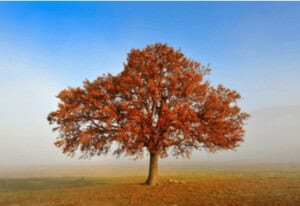Fennel (Foeniculum vulgare) may resemble dill, but its taste is something different. The anise-flavored bulbs, fronds and seeds make fennel a unique, unusual seasoning. Every kitchen garden should be graced with a plant or two, both for its beautiful wispy leaves and crunchy, flavorful bulbs.
Fennel is a mainstay of home-style Italian cooking. It’s especially wonderful as a grilled accompaniment to fish or grated raw into a salad. The leaves make for a beautiful garnish, and the seeds are a wonderful addition to salad dressings. Bulbs can be eaten like celery — they’re wonderful scoops for dip — and are braised and roasted to be served aside chicken and other poultry (especially game birds).
High in fiber and low in calories, fennel contains amounts of vitamin C, potassium, and folate, the water soluble B vitamin. It’s also loaded with phytochemicals that serve as antioxidants and boost immunity. The oils that give this herb its unique smell and aroma have antifungal properties.
Some fennel varieties (scroll down) are grown only for their aromatic, feathery leaves or as ornamentals. Florence varieties, the most popular, yield both delicious bulbs and leaves.

FREE SHIPPING!
Fennel, Florence (Organic)
Celery-like stalks have a mild licorice flavor and require a steady supply of water.
$3.00Learn moreChoose from a large selection of heirloom herb seeds available at Planet Natural. Planting instructions are included with each packet and shipping is FREE!
Quick Guide: Planting, Growing & Harvesting Fennel
- Used for foliage, bulbs and seeds
- Direct seed outdoors after danger of frost has passed; does not transplant well
- Prefers soil emended with compost
- Keep soil moist for young plants, then water regularly
- Few pests and diseases bother fennel
Sunlight: Full sun to part shade
Maturity: 30-40 days for leaves, 3-4 months for bulbs
Height: 2-3 feet tall
Spacing: 12 inches apart
Site Preparation
Fennel can be grown as a perennial in zones 6 or warmer but for best flavor is grown as an annual, which can be done all the way down to zone 4 with some luck and good timing. Most sunny, well-drained spots will do. Fennel does not do well in heavy, clay soils.
Plants tolerate a range of slightly acidic soils with a pH level as low as 5.5. You can guarantee thick, rich growth by working the soil with compost and an organic, slow-release fertilizer ahead of planting.
How to Plant
Plant fennel directly in the garden once the danger of frost has passed. If grown as a perennial, make sure you consider its permanent home. Because of its long tap root, it’s difficult to transplant.
Fennel grows tall and will shade other parts of the garden. It also inhibits the growth of other plants, mostly herbs, including coriander and caraway. Fennel and dill are known to cross-pollinate, resulting in inferior quality of both, so keep them apart.
Its deep, extensive roots make it difficult but not impossible to grow in pots. If attempting container gardening, use a pot larger and deeper than appears necessary.
Keep soil moist until the first leaves begin to appear, then water weekly. Plants will survive drought conditions but will become tough and fibrous if not supplied with enough water.
Push soil up around the bulb as it starts to swell. This balancing technique will keep the bulbs pale and white, rather than turning green like the stalks.

Harvesting and Storage
Fennel leaves can be harvested as the bulb grows. If growing the plant for seed, either for culinary purposes or for the following year’s planting, allow the plant to flower and then go to seed. The flowers are great for attracting pollinators, especially butterflies. Remove the heads when seeds separate easily from the stems, Then put the entire head in a brown paper bag for drying. The seeds will naturally separate from the stems as the drying progresses.
To harvest bulbs, brush away soil and cut at ground level. Bulbs with fronds will last for a week in the refrigerator, longer if the fronds are removed. Fennel doesn’t freeze or dry well — it loses most of its flavor — so eat it as fresh as it can possibly be.
Insect & Disease Problems
Few pests and diseases bother fennel. If you see aphids gathering on the stalks, spray them off with a blast of water or use an insecticidal soap.
Here’s a brief guide to fennel (PDF) from the University of Arkansas Agricultural Division.











